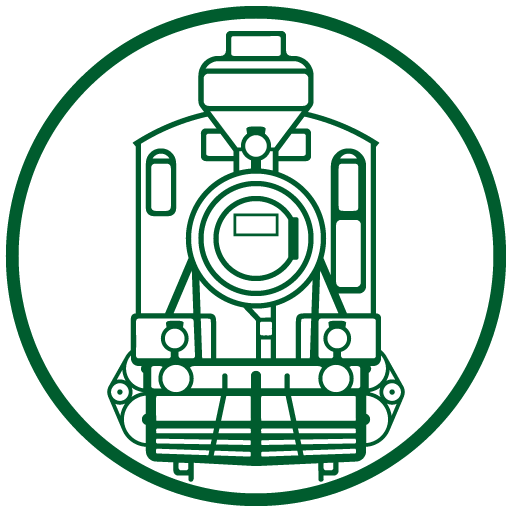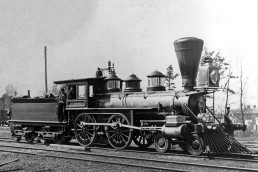When the state purchased the private Hanko–Hyvinkää Railway in 1875, the SVR took possession of nine American type simple expansion locomotives built by Baldwin of the USA in 1872–73. During private railway ownership these were named but the SVR removed the nameplates, numbering them 101–109 instead. In 1885 they were classified A4 and renumbered 63–71 in late 1887.
These engines differed considerably from other classes in Finland. Typical of American practice, the A4 had bar frames and a tender with two four-wheel bogies. The external decorative finish was also unique with ornamental brass work in abundance and a prominent large front headlamp. Two steam domes, with a sand dome between, were mounted on the boiler. Working steam was supplied from the front dome to the cylinders, the rear dome supplying other locomotive equipment. All three domes were far more elaborate in style than those normally used in Finland. Originally the boiler had a copper firebox and brass tubes, but some engines later received a replacement boiler with a steel firebox and tubes. Stephenson inside valve gear and slide valves were used for the cylinders. The class continued as wood burners under the ownership of the SVR but nos. 63, 66 and 70 were coal fired between 1908 and 1910.
A special feature was the use of both an injector and a water feed pump, the latter being worked by a crosspiece. The injector was exceptionally large and was located below the footplate. The ashpan was also extraordinary because fuel was burnt in a cast iron hopper in its bottom instead of in a fire grate. Train steam heating equipment was later installed, but not until the early 20th century. A screw brake in the tender was the only form of engine braking until a steam brake was fitted in the 1880s.
The A4 class locomotives, handling all types of duties, remained on the railway for which they were intended until 1910. The exception was no. 67 which, following an accident near Korpi station in 1907, became the first engine owned by the SVR to be scrapped. After 1910, these 4–4–0s became standby engines at Hyvinkää, Hanko and Mustio depots, but nos. 63, 68 and 70 were used in 1911 for the construction work of the Seinäjoki to Kaskinen line and its Kristiinankaupunki branch. The class was withdrawn between 1910 and 1918, with no. 71 surviving the longest providing carriage heating at Lahti, Helsinki and St Petersburg.












